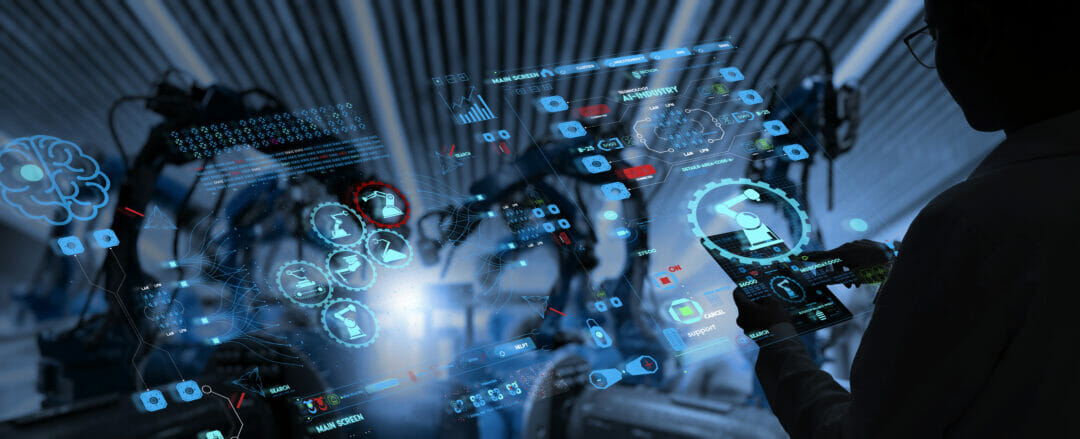The term Artificial Intelligence (AI) has been popularised by companies such as Google and Amazon and often draws connotations of robots, natural language assistance or self-driving cars. Whilst all of these are popular examples of the more interesting use cases for AI, the oftentimes invisible technology is already starting to impact everyday life. In the industrial world, AI is a technology we’re increasingly finding uses for and one that will be a big focus for companies in 2022.
For industrial applications, AI combines data science with machine learning and domain expertise to perform a wide variety of critical functions that may range from monitoring essential infrastructure to ensuring that machinery continues to operate as optimally as possible. To fully realise the benefits of AI, industrial companies must work to understand which processes can benefit most from AI and focus on a highly specific set of potential operational efficiencies, quality gains and safety enhancements. Companies also need to identify and overcome any challenges that are preventing an AI deployment, data quality and data accessibility for instance. It’s also vital that employees are educated on the value and limitations of AI, so that they can learn to trust and adopt the technology based on its merits.
In 2022, expect use cases for AI to be more pragmatic and less prosaic than characterised in the movies. Use cases, such as recognising if the bolts on a wheel in an automobile factory are correctly positioned, are an important operational process and one that utilises AI-driven computer vision. AI will also start to show up in the applications that people already use — photo tagging is one such example. With today’s current technology we have the ability to take clear and vibrant photos for auditing purposes; however, these are not useful unless tagged for discoverability and search. Today, if a parts issue is identified in the photo, the user can manually add a tag to the image. In the next twelve months AI on the device itself will begin securely analysing the photos for us, recognising the objects within based on similar images that were previously manually tagged and auto-tag them in real time.
The five P’s of industrial AI that power digital twins
From our own experience, assisted reality that enables technicians wearing special head-worn devices to share real-time information with their hybrid employees and partners is becoming increasingly commonplace in the industrial world. Now let’s take it a step further. By monitoring what the most expert, and fastest users do, the AI-based software can intelligently guide a novice frontline worker through routine manufacturing, inspection, service or audit procedures – with little or no human intervention. This will increasingly become commonplace in 2022, where workers in harsh or hazardous environments have access to AI-based software.
It’s important to recognise though that industrial AI won’t negate the need for human expertise, at least in the foreseeable future. Computers can monitor IoT sensors in a power plant automatically, but ultimately, a human in the loop needs to understand the data needed to ensure that the AI systems in place are optimal. The AI can help prioritise which alarms are significant enough to require immediate escalation to an experienced technician, or are indicative of an underlying maintenance issue.
While we don’t all need to attain a PhD in AI, it’s important for operations staff and business leaders to establish a greater knowledge of AI tools and techniques and their applicability to industrial problems. General industrial audiences – including Line of Business (LOB) and IT – need to understand how to apply it in their own businesses. To drive adoption, it’s important to talk about use cases and standardised tools for creating an AI experience that everyone in IT and across the LOB can enjoy. Watch this space for 2022 and beyond.








